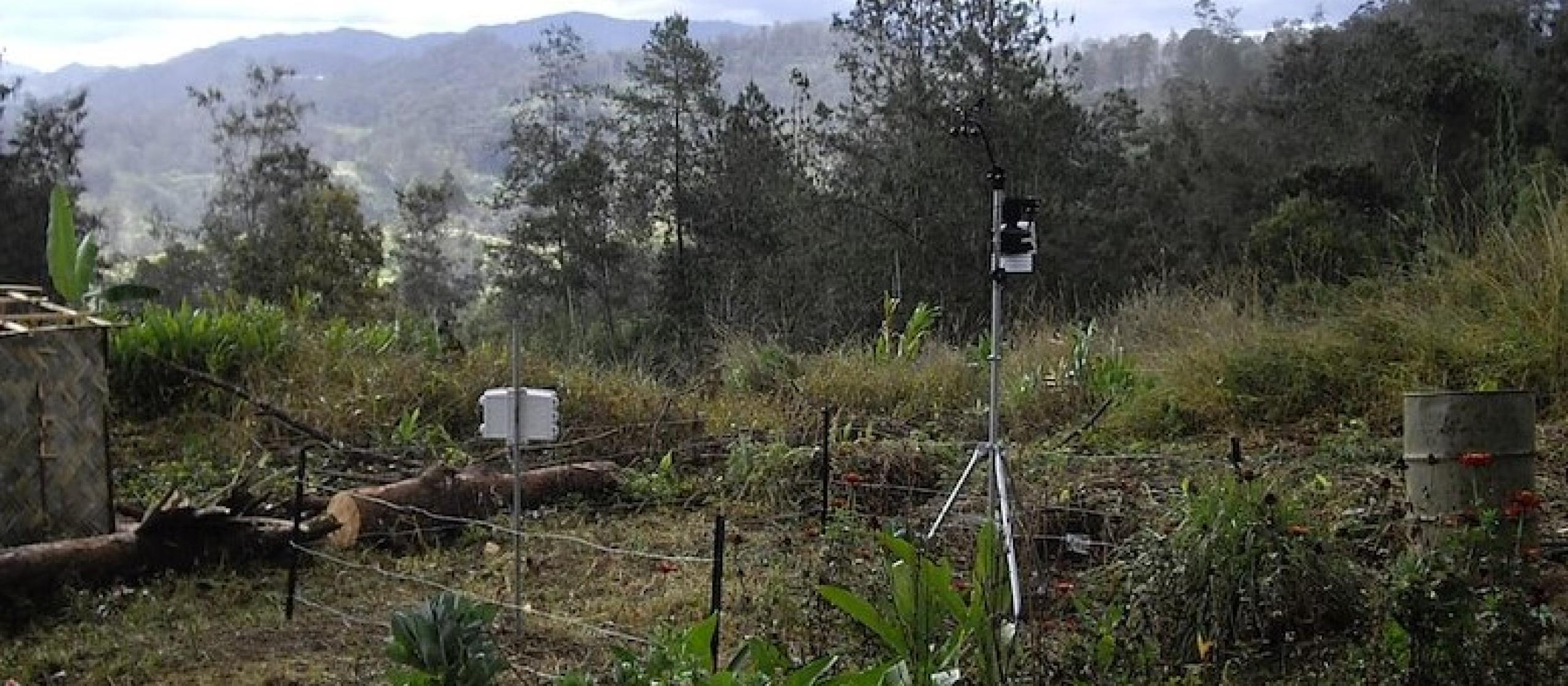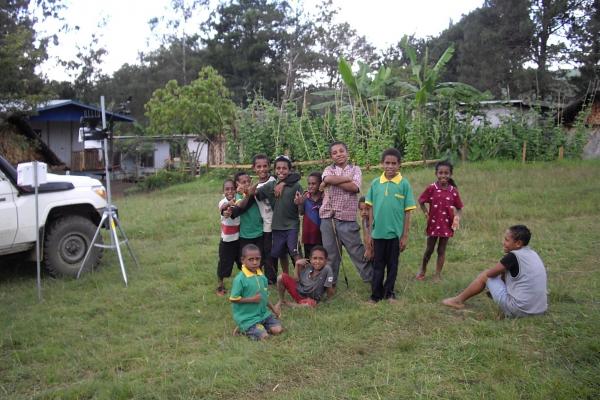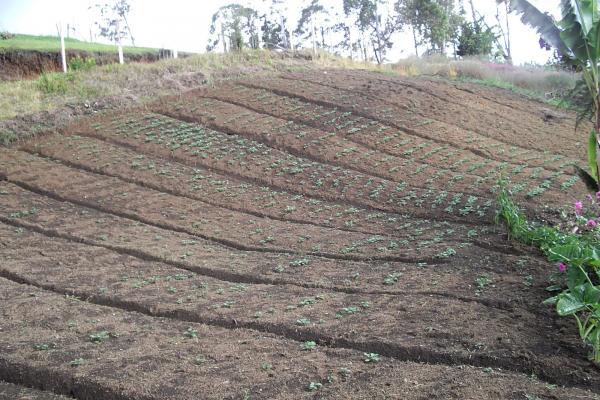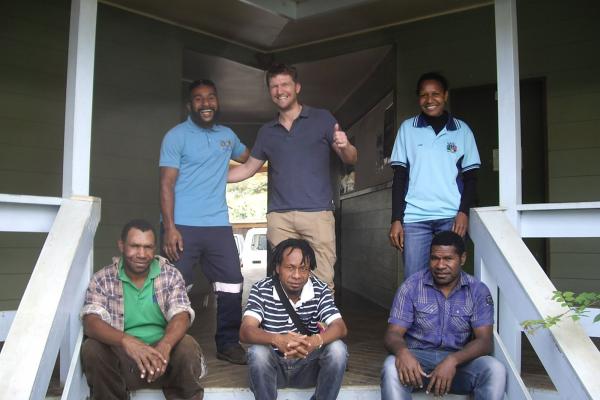- HomeHome
-
About ACIAR
- Our work
- Our people
-
Corporate information
- ACIAR Audit Committee
- Commission for International Agricultural Research
- Policy Advisory Council
- Agency reviews
- Executive remuneration disclosure
- Freedom of information (FOI)
- Gifts and benefits register
- Information publication scheme
- List of new agency files
- Contracts
- Legal services expenditure
- Privacy impact assessment register
- Commonwealth Child Safe Framework
- Benefits to Australia
- Careers
- 40 years of ACIAR
-
What we do
- Programs
- Cross-cutting areas
- Resources
- Where we work
-
Funding
- Research projects
- Fellowships
-
Scholarships
- John Allwright FellowshipScholarships to study in Australia for ACIAR partner country scientists to have Australian postgraduate qualifications
- ACIAR Pacific Agriculture Scholarships and Support and Climate Resilience Program
- Alumni Research Support Facility
- Publications
- News and Outreach
Date released
14 January 2019
Farmers have always had to deal with the vagaries of climate. But farmers in many countries are now contending with much more variable and seemingly less predictable weather patterns, along with more extreme climatic events such as droughts and floods. Some traditionally high rainfall regions, such as the highlands of Papua New Guinea, are experiencing droughts that farming systems are struggling to cope with.
Papua New Guinea (PNG) suffered the effects of an El Niño-induced drought in 2015 and 2016. Drought and widespread water shortages, combined with unseasonal frosts in the highlands, led to failure of the sweetpotato crop, severely disrupted household food production and caused widespread hunger.
Eighty per cent of PNG’s population depends on rain-fed farming and more than three quarters of food consumed is locally grown. Understandably, PNG’s National Agricultural Research Institute (NARI) is interested in being better able to predict and manage droughts in regions such as the Central Highlands, where farming systems are now having to contend with unprecedented low rainfall.
NARI is a key partner for ACIAR in PNG. In 2017, in response to a request for assistance, ACIAR convened a meeting of 20 Australian scientists working at the forefront of applied research into weather prediction and climate change to meet with NARI Director General, Dr Sergei Bang. ‘We know another drought will come,’ says Dr Jayne Curnow, ACIAR’s Research Program Manager for Social Sciences, ‘so it was an opportunity for us to put our heads together, and consider ways PNG could be better prepared in the future.’
Following that meeting, Dr Steven Crimp, a research fellow at the Australian National University’s Climate Change Institute, initiated a scoping study supported by ACIAR.
Firstly, Crimp and his colleagues were interested in what he describes as ‘the knowledge landscape, how farmers share information about crop production and climate: within the village itself, with other communities, and between the community and government’. Was there any difference, for example, between the information men need to respond to climate variability and the information women need? The team surveyed farmers in a number of locations in the highlands to identify the information needed to be able to respond to, and prepare for, climate variability.
The second focus of the initial research was climate data. Crimp says, ‘We knew one of the limiting factors in responding [to climate emergencies] was climate information’. PNG once had approximately 48 weather stations, but over time this number has declined dramatically.
‘There are 12 weather stations currently operating across PNG with a reasonable length of record, (you need at last 15 years of data before you can use that data reliably),’ Crimp says. Using the data from those 12, they were able to develop statistical approaches to better understand temperature and rainfall trends, and in turn develop climate information interpolated across PNG, despite the challenges created by PNG’s ‘massive topography’.
Crimp says the final part of the research focused on the question: ‘Can we look at expert knowledge and work out strategies for responding to climate variability? We discussed with local experts the types of farming practices they could consider adopting to mitigate drought or wet years. This information was collated from a number of historical field trials and local knowledge and presented as possible management strategies that local farmers could follow. We sat down with these experts and came up with a number of hypothetical scenarios. What should you do at various elevations in a drought? What if it was particularly wet? Or a business-as-usual year?’ The experts then devised some simple techniques and technologies to manage these scenarios.
Dr Jayne Curnow says the ‘expert knowledge’ refers to ‘two equally valid sources of knowledge: the deep local ecological knowledge and scientific evidence-based knowledge, brought together for a better result’.
In dry conditions, for example, one strategy could be to have different planting times and/or companion cropping, such as pairing a relatively drought-hardy crop like cassava with sweetpotato. Mulching and creating furrows could also improve moisture retention. In a particularly wet year, simple strategies include raising plant beds to avoid waterlogging, ploughing to reduce run-off and the loss of topsoil, and farming to conserve ground cover.
The initial research also looked at weather forecasting on a macro level, to identify scientific products that PNG’s weather service could use more effectively. NARI’s initial request was for assistance with seasonal forecasting accuracy. Weather forecasting is not an exact science, especially in a country like PNG, which faces twin challenges of data availability and varied topography. PNG has climates ranging from coastal areas, such as that around the city of Lae with an extraordinary annual rainfall of around 4300 mm, to the Eastern Highlands capital, Goroka, which is 1600 m above sea level and has an annual rainfall of 1840 mm.
With funding from the Department of Foreign Affairs and Trade, Australia’s Bureau of Meteorology (BOM) is working with the PNG weather service on a range of initiatives. These include training programs and operationalising the BOM’s forecasting system, Seasonal Climate Outlooks in Pacific Countries (SCOPIC), for PNG. (SCOPIC is described by the BOM as ‘an accessible, stand-alone seasonal climate prediction software system, which uses a statistical method to determine forecast probabilities, based on historical data’).
Australia and its PNG partners are now working together on the final stages of review and approval for further research. Work will be done to determine if the simple management strategies identified above are more effective than current practices under a range of seasonal conditions. Both women and men will be engaged in field trials to ensure that the strategies are practical and fit their farming styles and needs. To help with the issue of insufficient weather stations and data, and to mitigate patchy connectivity, local communication providers will be approached to co-locate weather stations with their towers. Finally, collaboration with the multiple tiers of government in PNG will ensure that, when the project finishes, there will be continuity and drought preparedness will be part of their day-to-day operations. Crimp says this will include ‘regular interaction with the Provincial Forum on Disaster Risk Management, which makes resourcing decisions at a provincial level’.
It is hoped that the next phase of this research will be underway by the end of 2018.






